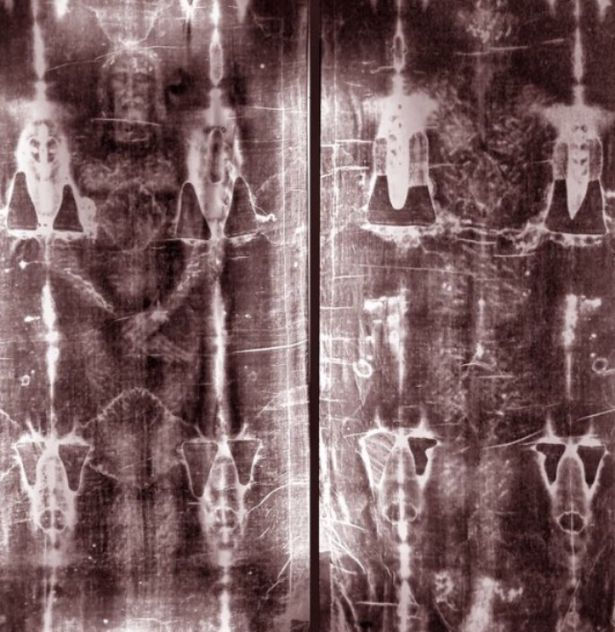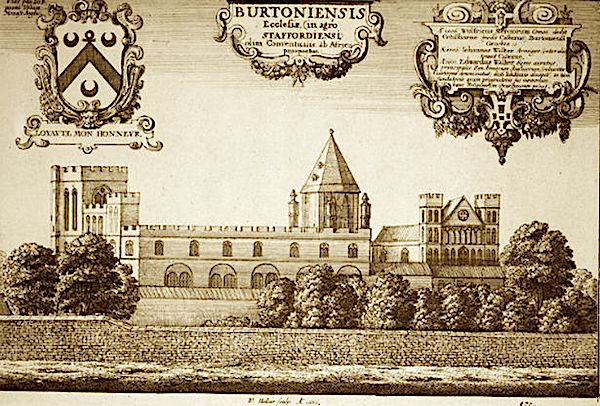The Shroud of Turin is Actually a… WTF?
- anjuli26
- Apr 22, 2022
- 3 min read
Updated: Jan 20, 2023
A British historian has proposed a new theory about the origins of the Shroud of Turin that will challenge everything you think you know about its history.

By Ellen McDaniel-Weissler
Legend has it that the Fisher King was the last guardian of the Holy Grail. Due to a wound in his groin he could not walk, only fish, a medieval code for impotence. But according to legend, he would be magically healed when a Knight of the Grail asked him a specific question.
Why should we care about the Fisher King? Because British historian and anthropologist David Adkins has a theory about the Shroud of Turin, the iconic cloth that many Christians believe covered the body of Christ.

Adkins says the shroud was originally a medieval tablecloth created in Burton upon Trent in Staffordshire, England. And the image isn’t Christ, it’s the Fisher King… or at least the outline from an alabaster effigy of the legendary hero that was covered by the tablecloth when placed into storage in the mid 14th century.
Surprisingly, Adkins has a great deal of evidence on his side.
For instance, the cloth was radiocarbon dated to 1260-1390 AD, centuries after the death of Jesus. Moreover, researchers found gypsum in the cloth, which is critical to the production of alabaster. The monks of Burton Abbey were once famous for their alabaster carving, made possible by abundant local deposits of alabaster and gypsum.
Moreover, the cloth’s table-like dimensions (13 feet long by 3 feet wide) and the traces of exotic pollen, fish, and plant matter found within its weave, suggests that the cloth may have covered a table where exotic foods were once eaten.
All signs, says Adkins, point to the fact that this cloth once covered a table, and later an alabaster carving. But never a body.

The Lost Templar Treasure
Adkins also connects Burton Abbey to nearby Sinai Park House (shown above) and the lost treasure of the Knights Templar, a collection of relics said to have been brought to the British Isles after the Templars were evicted from the Holy Lands in 1307. In fact, Adkins believes that the Holy Grail itself might remain hidden in the tunnels beneath Sinai Park House.
According to Adkins, the Templars brought their treasure to Burton Abbey sometime after 1307. Soon after, he suggests, they commissioned the monks to carve a life-sized statue of the Fisher King to honor the Holy Grail, which many scholars believe was part of their treasure.
If the statue was on display at the Abbey until 1350 when Abbot Ibstock decided to rebuild the abbey church, it would have been placed into storage in the cellar, perhaps covered by an old tablecloth, to protect it from construction debris.

After the renovations were completed, Adkins theorizes that the monks, when pulling the statues from storage, discovered the image on the cloth, possibly created by a chemical interaction between the damp cellar air and the alabaster Fisher King statue. With a close resemblance to medieval depictions of Christ, the monks may have decided to take advantage of their new cloth “relic” by placing it on display in the monastery for pilgrims to venerate… not as the Fisher King but as the shroud of Christ.
Doctoring the Shroud
But what about the blood on the head where the crown of thorns would have sat, where the spear pierced his side, or the nail wounded his hands? The Fisher King statue had no such marks, so the cloth would not have had them either.
According to Adkins, the monks, who were famous for bloodletting, may have applied their own blood to complete the image of Jesus. (To those who feel that monks would never descend to such deceptive practices, it might be useful to point out that monasteries were frequently in dire financial straits and that this order of monks was not noted for its adherence to church policy or its close ties to the Papacy. Fraudulent religious relics were common throughout the Middle Ages, as was the selling of Indulgences and other practices now banned by the Holy See.)
Adkins also believes that after the relic’s “discovery,” it was sold to a wealthy Florentine who had close ties to the Abbey, which is why it was first described around 1353-57 as being in mainland Europe.

Adkins final proof is the size and positioning of the image’s right hand. The outline of the hand is clearly elongated. Adkins theorizes that this distortion was deliberately created by the monks to hide the outline of the wounds in the Fisher King’s groin.
Is the statue of the Fisher King still hiding somewhere in Burton Abbey? Adkins certainly hopes so. “If found, it would be confirmatory proof” of Adkin’s claims, says the historian.
For more info on the legend of the Fisher King, click here.
Comentários